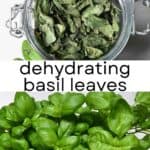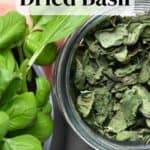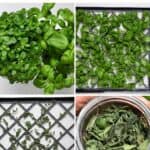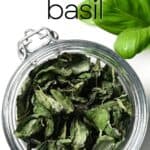This post may contain affiliate links. Please read our disclosure policy.
You’ll never return to the herbs and spices aisle at the grocery store with my easy three methods to take fresh basil to dried and make your very own dried basil for a fraction of the price.
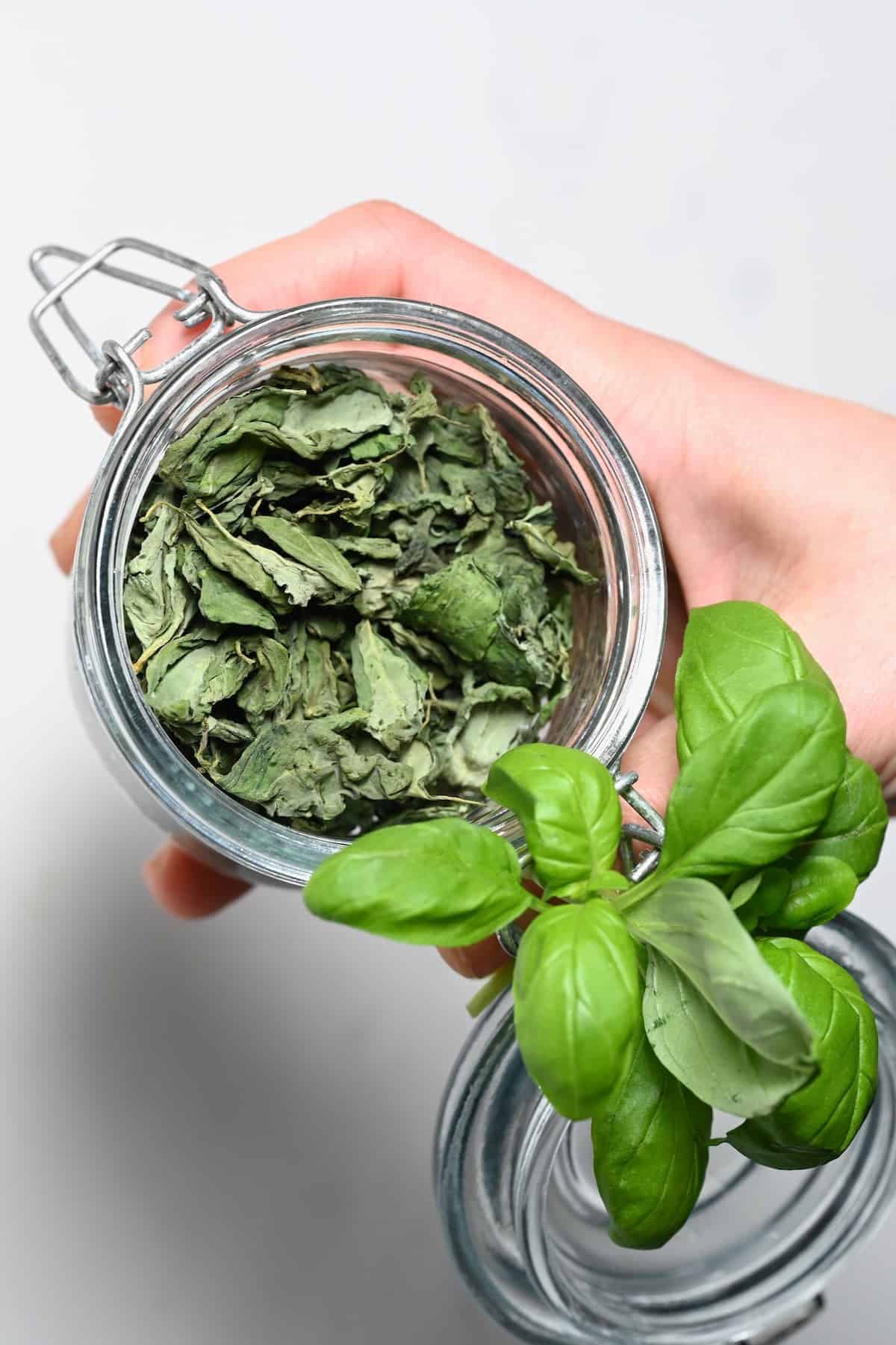
If you’re one of those people – like me – who time and time again has watched their fresh basil plant wilt and cursed the fact that it wasn’t used, this is the post for you. Dry basil leaves are a great way to reduce herb waste and turning your fresh herbs into dried ones can be done in a matter of minutes.
My pantry is packed with dried basil leaves so I can work them into pastas, soups, salads and so much more at a moment’s notice.
If I haven’t convinced you, here are a few other reasons to dry basil:
- You still get the strong flavor of fresh basil – drying basil helps preserve the aroma.
- It’s budget-friendly and simple to do; great for preserving fresh basil.
- If you grow the basil yourself (which I always recommend), you’re guaranteed better quality – you know exactly where your dry basil is from and how it’s been grown.
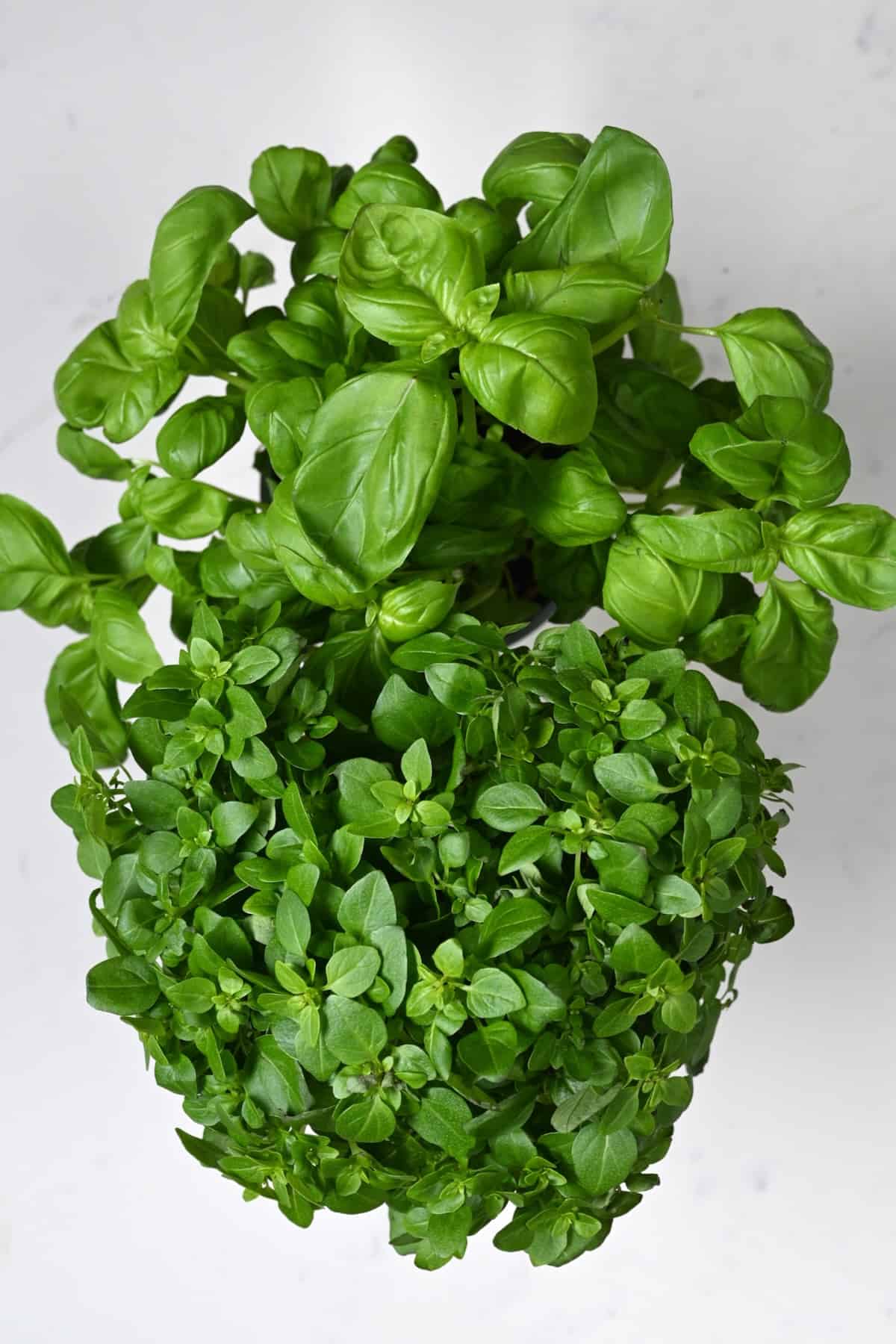
Want to save this recipe?
How to Dry Basil
To dry fresh basil, remove the leaves from the stems. For this herb, we only use the basil leaves, as they have the best flavor. Wash basil thoroughly and pat dry with paper towels or a clean kitchen towel.
There are three top ways how to make dried basil – each varying in time and effort.
In a Dehydrator
For drying basil in a dehydrator, preheat the food dehydrator to 95-115ºF/35-46ºC.
Spread into a single layer on the dehydrator trays and dry for 2-4 hours until it’s completely dry and brittle.
The temperature, humidity, and dehydrator model will determine how long to dehydrate basil, so keep an eye on the leaves!
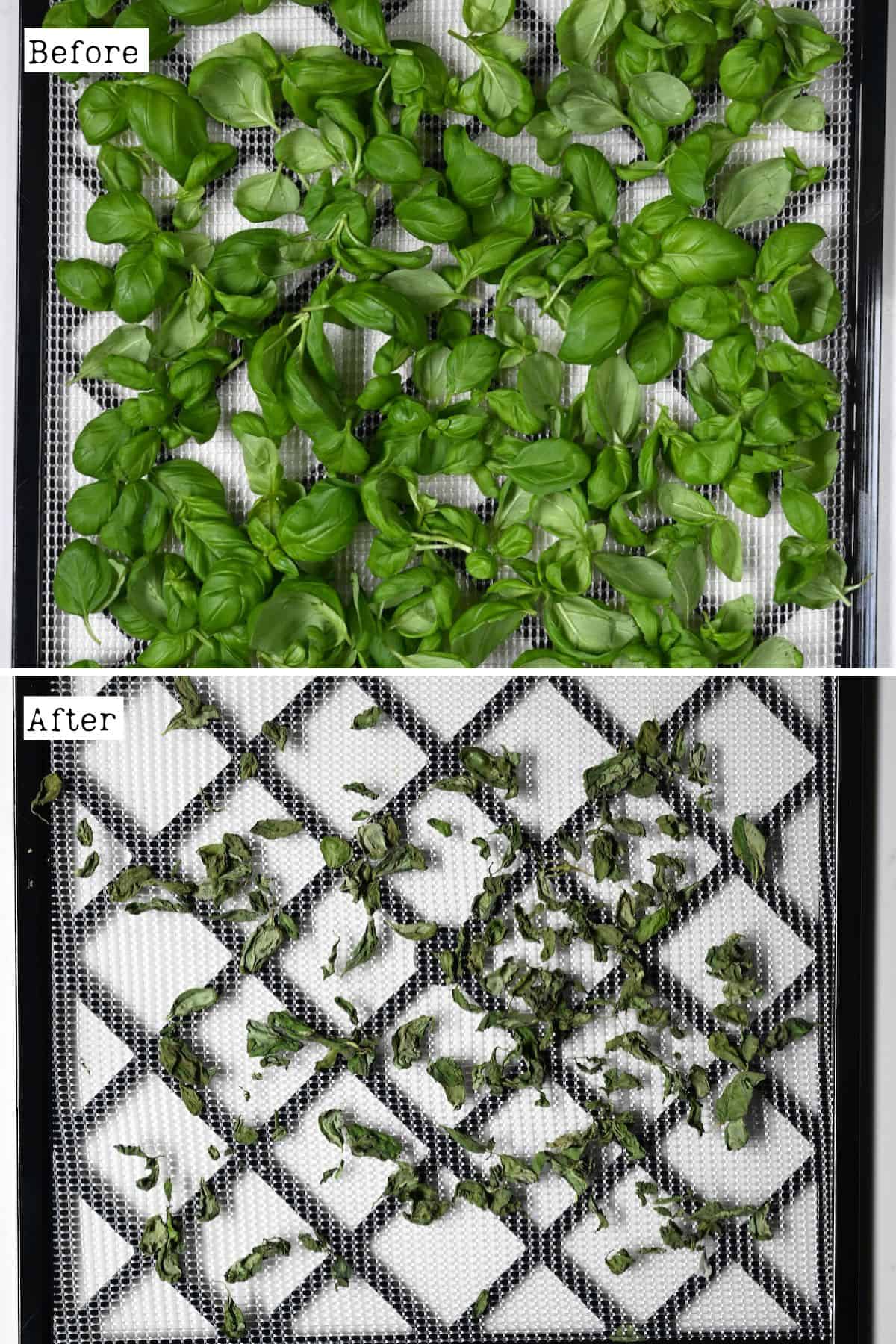
In the Oven
For oven drying basil, put your oven on the lowest setting – around 170°F/75°C. The best way how to dry basil in the oven is to spread it out in a single layer (so it dries evenly) on a baking sheet lined with parchment paper. This will also stop the dry basil leaves from sticking.
Place in the oven and leave the door slightly ajar so all the moisture escapes. Dry for about 2 hours but check on the leaves every 30-45 minutes.
If your oven can go lower – 95-115ºF/35-46ºC – then there’s no need to keep the door open. Dry for 2-4 hours, checking on the leaves a few times.
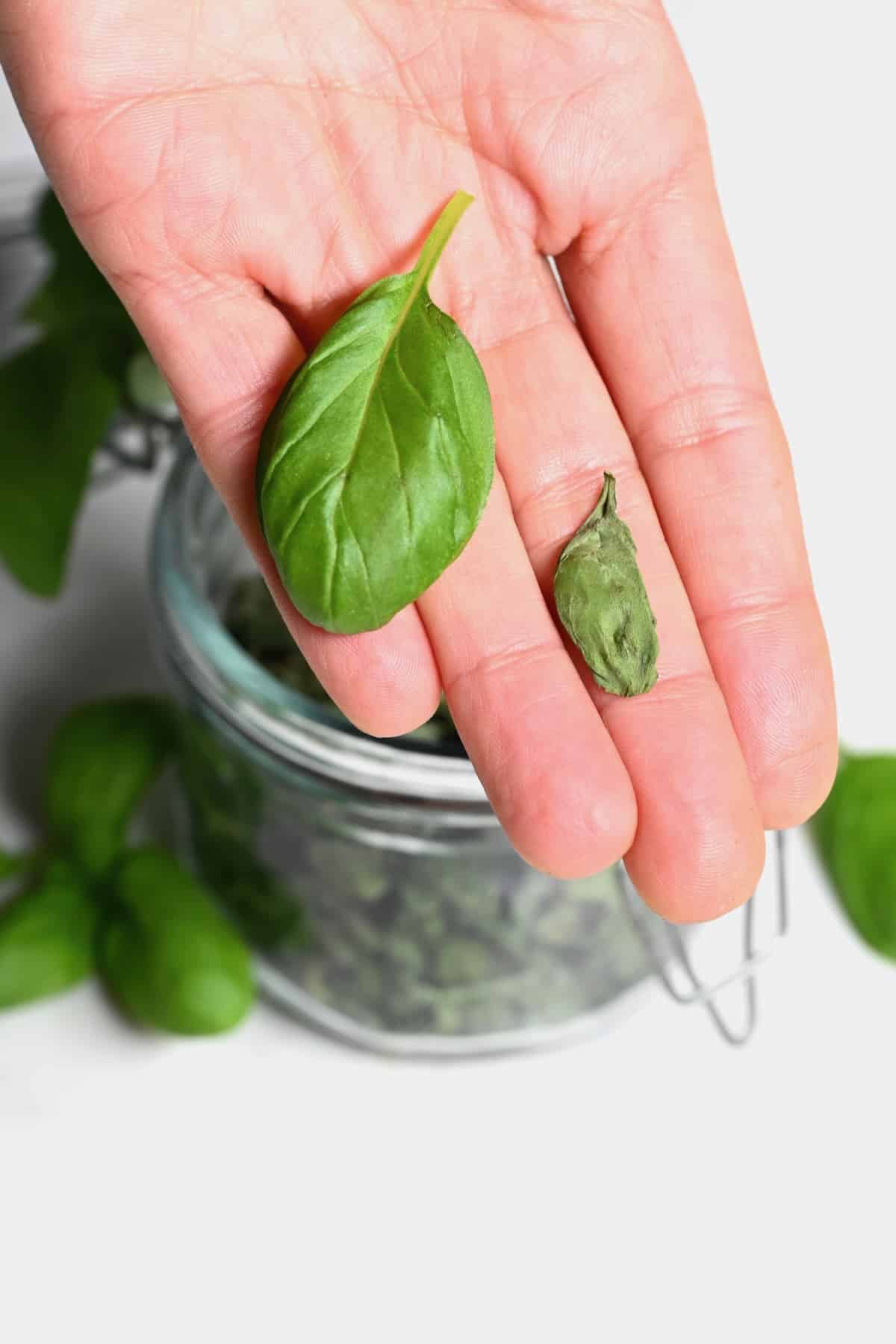
Air-Drying
Air dry basil is the easiest method – but is the longest way how to dry basil. Tie the basil into small bunches/bundles. Hang them upside down in a warm, dry, and well-ventilated place but away from direct sunlight. Leave for several days until the leaves and stems are completely dry.
How to Use Dried Basil
- Use for flavor in tomato-based dishes like pasta sauce, pizza sauce, and creamy tomato soup.
- Sprinkle over salad dressings for flavor.
- Use it for flavor on roasted vegetables (dried basil does great in the oven) – I love it on roasted potatoes, carrots, and squash.
- Use to bring aroma to homemade herb butters.
- Use it for Italian-style marinades.
- As a herb synonymous with Italy, it’s perfect for summery, Mediterranean dishes, like tomato salads, burrata salad, or a bowl of your favorite pasta.
How Long Does Dried Basil Last
Store your dry basil leaves in an airtight container in a cool, dry place – away from direct light and heat sources. The dried herbs can keep their freshness for up to three years if properly stored, but I recommend using them within six months of drying.
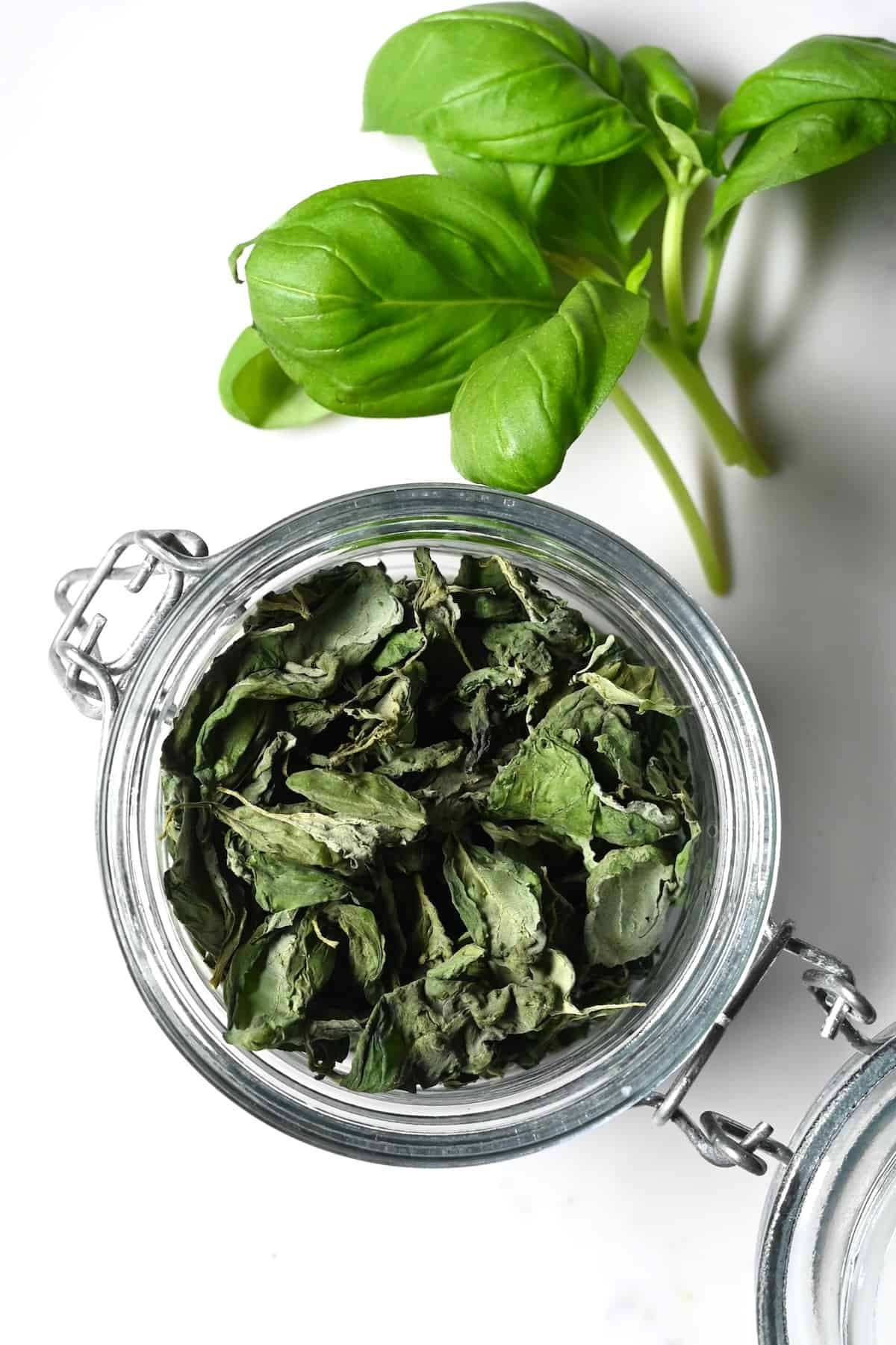
FAQs
Touch it. When the leaves feel brittle and crispy, and crumble easily in your hand, then it’s ready. If it’s soft, there’s still moisture – and it needs longer drying.
Dried basil vs fresh – the endless dilemma. Fresh is best if you want the delicate aroma and flavor, good for garnishing. Dried basil is better if you want an intense flavor, so it’s great for dishes with a long cooking time, like soups, stews, and casseroles.
You can for a few seconds if you want to preserve their color, but I don’t bother.
Store them as whole dry basil leaves. When you crush them, they release some of their aromatic oils, so it’s better to crush them just before you plan to use them. And be sure to store them in an airtight container!
More Drying Herbs DIYs
- 4 Methods to Dry Sage Leaves
- How to Dry Chives
- 3 Methods to Dry Parsley
- How to Dry Green Onions
- 3 Ways to Dry Dill
If you try any of these methods for how to dehydrate basil leaves, let me know how it goes in the comments below. I’d appreciate a recipe card rating and would love to see your recipe recreations – tag me on Instagram @Alphafoodie!
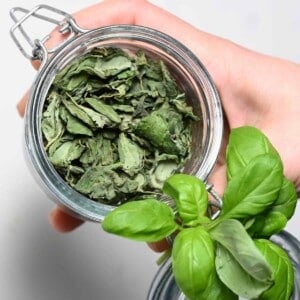
How to Dry Basil Leaves (3 Methods)
Equipment
- Dehydrator or oven
Ingredients
- 4 oz fresh basil or as much as wanted
This will yield about 0.3 oz/9 g of dried basil
Instructions
- Remove the leaves from the stems. Wash the basil thoroughly and pat dry.
Dry In a Dehydrator
- Preheat the dehydrator to 95-115ºF/35-46ºC. Spread the leaves into a single layer on the trays and dry for 2-4 hours until they are completely dry and brittle. The temperature, humidity, and dehydrator model will determine how long to dehydrate basil, so keep an eye on the leaves!
Dry in an Oven
- Put your oven on the lowest temperature setting – around 170°F/75°C. Spread the leaves out in a single layer (so they dry evenly) on a baking sheet lined with parchment paper. This will also stop the dry basil leaves from sticking.
- Place in the oven and leave the door slightly ajar with a wooden spoon so all the moisture escapes. Dry for about 2 hours but check on the leaves every 30-45 minutes. If your oven can go lower – 95-115ºF/35-46ºC – then there’s no need to keep the door open. Dry for 2-4 hours, checking on the leaves a few times.
Air Drying
- Air-drying basil is the easiest method – but it is the longest. Tie the basil into small bundles and hang them upside down in a warm, dry, and well-ventilated place. Leave for several days until the leaves and stems are completely dry.
Notes
Nutrition
Nutrition information is automatically calculated, so should only be used as an approximation.

